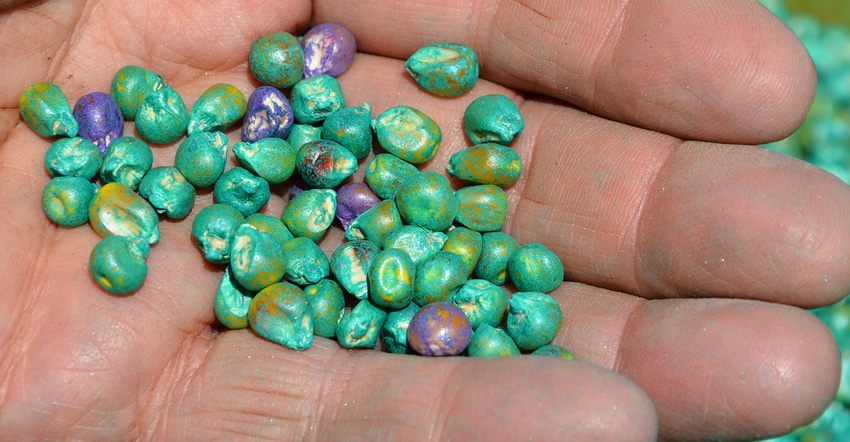August 25, 2017

Many crop seeds are planted with a thin, multilayer coating of pesticides called a seed treatment. Seed treatments protect young plants from fungal diseases and early-season insect pests.
For many Minnesota crops — corn, soybeans, cereal grains, potatoes — seed treatments are essential for good yields. Seed treatments can also cut the need for later foliar pesticide applications.
Sometimes, though, particles of the protective seed coating rub off and are released into the air during handling and planting. This abraded dust contains pesticides that could be harmful to non-targeted and beneficial insects, like honeybees.
Innovation offers solutions
The good news is there’s lots of innovation aimed at reducing unwanted dust from treated seeds. Less dust means less risk of unintentional environmental presence. The Agricultural Utilization Research Institute recognizes this and is working on solutions to this dusty problem — solutions that incorporate agricultural co-products.
For example, AURI helped a Forest Lake, Minn., company, Micro-Carriers, develop and test a low-dust seed treatment for potato seed pieces. Commercial potato crops propagate vegetatively from pieces of cut-up potatoes. A main ingredient in the patented seed treatment is ground sunflower hulls.
In tests performed by the USDA Agricultural Research Service, this seed treatment cut dust emissions in potato seed cutting sheds by an astonishing 89%, compared to standard potato seed treatments. The new seed-dressing formula, which is now ready for commercialization, can also carry pesticides for several other types of seeds.
Keeping seed treatments in place
Another potential problem with seed treatments is leaching of mobile chemicals into groundwater. A 2016 Minnesota Department of Agriculture report noted that plants absorb less than 20% of the active ingredient in neonicotinoid insecticide seed dressings. The remainder enters the soil, where it is susceptible to loss.
AURI is working on ways to hold the active ingredients in seed treatments within the root zone. One promising idea is to incorporate biomass char in the seed coating.
Production of char comes from heating an organic material, such as sugarbeet pulp, wheat straw or manure, in the absence of oxygen. Char is an excellent material for soaking up oil and odors. It is used in the oil drilling industry and as an additive in poultry litter. Char Energy in Ada, Minn., makes equipment for commercial bio-char production.
There is evidence that blending biomass char into seed treatments could curb the movement of chemicals in the soil. AURI plans to collaborate with the USDA ARS to test this hypothesis.
Source: AURI’s Ag Innovation News
You May Also Like




